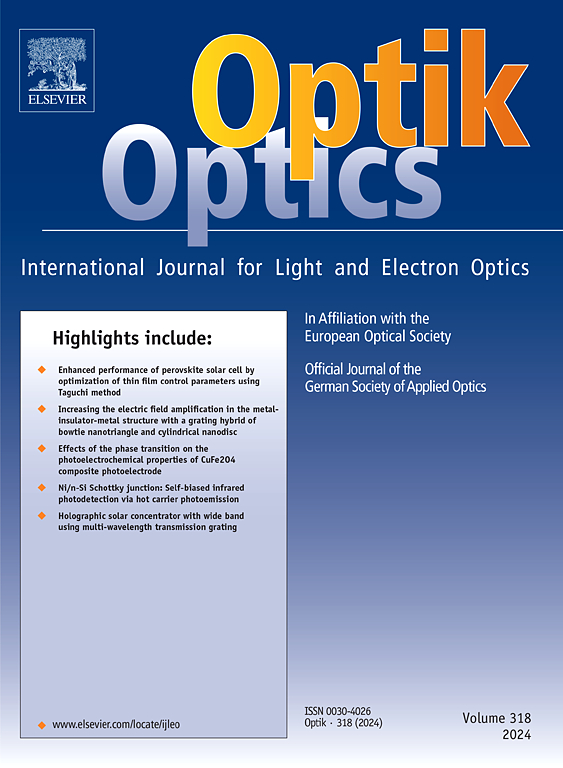采用深度神经网络的紧凑型双频超材料天线,用于下一代无线通信
IF 3.1
3区 物理与天体物理
Q2 Engineering
引用次数: 0
摘要
本文采用一种新颖的深度神经网络(DNN)方法来准确预测电-感-指间电容(EL-IDC)超材料单元电池的谐振频率。该方法采用等效电路模型(ECM)来识别影响电感和电容的关键设计参数,从而有助于准确分析电磁行为。深度神经网络由多个隐藏层实现,利用由几何和材料属性变化生成的综合数据集。通过比较贝叶斯优化、Levenberg-Marquardt算法和基于深度神经网络的缩放共轭梯度训练算法,贝叶斯优化在保持计算效率的同时获得了更高的预测精度。通过设计非对称共面带状线馈电紧凑型超材料天线,进一步验证了该方法的有效性,实现了3.1 ~ 3.9 GHz和7.0 ~ 8.7 GHz双频段。实验和仿真结果表明,该天线具有较低的反射系数、有效的阻抗匹配和良好的辐射特性。本研究强调深度神经网络的变革潜力,用于增强下一代无线通信应用中超材料的设计功能。本文章由计算机程序翻译,如有差异,请以英文原文为准。
Compact dual-band metamaterial antenna using deep neural network for next-generation wireless communication
In this research paper, a novel deep neural network (DNN) methodology is used to accurately predict the resonant frequency of electric-inductive-interdigital capacitive (EL-IDC) metamaterial unit cells. The approach employs an equivalent circuit model (ECM) to identify critical design parameters that influence inductance and capacitance, facilitating an accurate analysis of electromagnetic behavior. DNN is implemented with multiple hidden layers, utilizing a comprehensive dataset generated from variations in geometric and material properties. Comparative evaluations of Bayesian optimization, Levenberg–Marquardt, and scaled conjugate gradient training algorithms with DNN reveal that Bayesian optimization achieves superior predictive accuracy while maintaining computational efficiency. The proposed methodology is further validated by designing an asymmetric coplanar stripline (ACS)-fed compact metamaterial antenna, achieving dual frequency bands 3.1 to 3.9 GHz and 7.0 to 8.7 GHz. Experimental and simulation results demonstrate the antenna’s excellent performance, including low reflection coefficients, effective impedance matching, and radiation characteristics. This study emphasizes the transformative potential of DNN, which is used to enhance the design functionality of metamaterials for next-generation wireless communication applications.
求助全文
通过发布文献求助,成功后即可免费获取论文全文。
去求助
来源期刊

Optik
物理-光学
CiteScore
6.90
自引率
12.90%
发文量
1471
审稿时长
46 days
期刊介绍:
Optik publishes articles on all subjects related to light and electron optics and offers a survey on the state of research and technical development within the following fields:
Optics:
-Optics design, geometrical and beam optics, wave optics-
Optical and micro-optical components, diffractive optics, devices and systems-
Photoelectric and optoelectronic devices-
Optical properties of materials, nonlinear optics, wave propagation and transmission in homogeneous and inhomogeneous materials-
Information optics, image formation and processing, holographic techniques, microscopes and spectrometer techniques, and image analysis-
Optical testing and measuring techniques-
Optical communication and computing-
Physiological optics-
As well as other related topics.
 求助内容:
求助内容: 应助结果提醒方式:
应助结果提醒方式:


